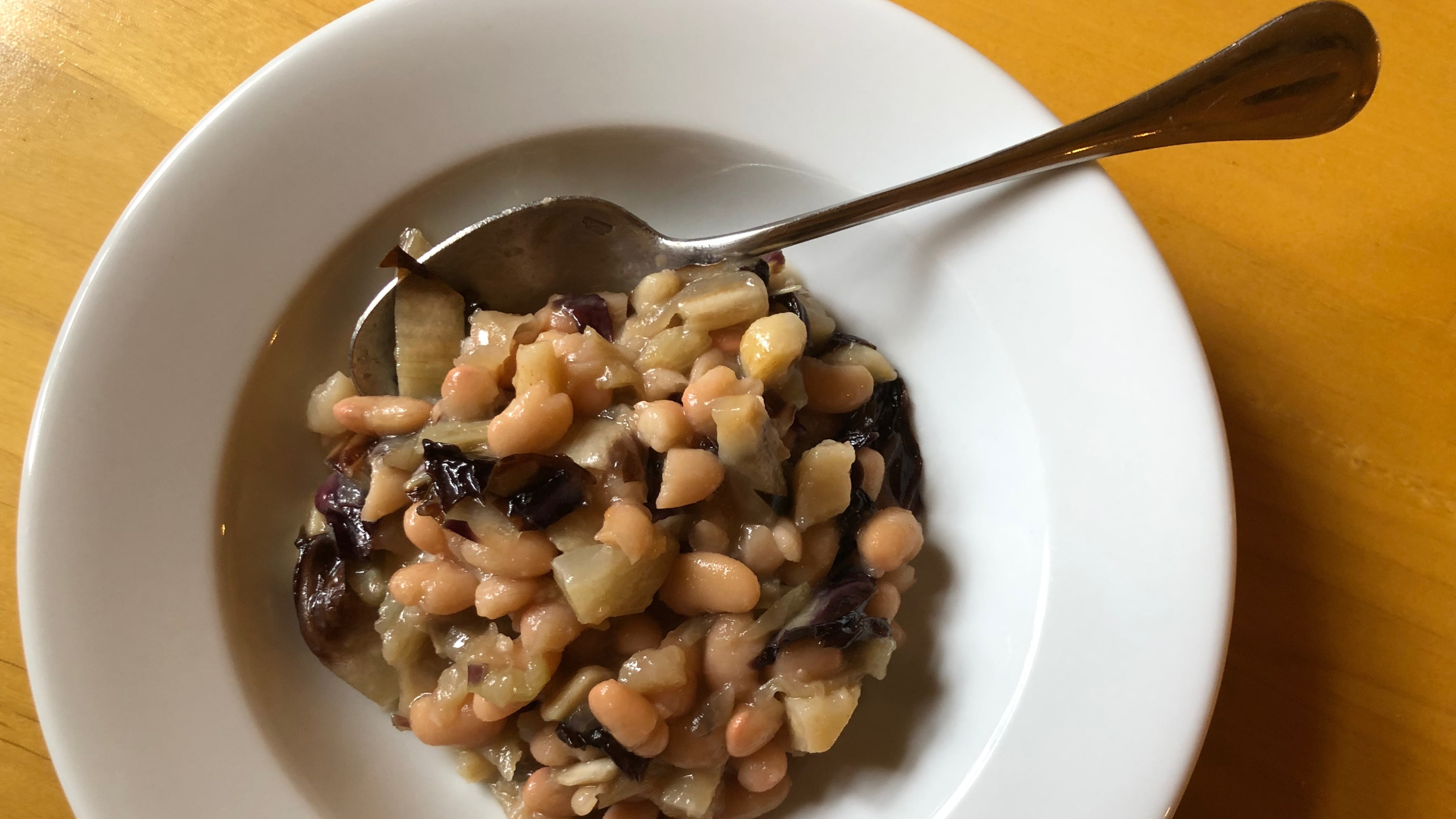Jim Dixon wrote about food for WW for more than 20 years, but these days most of his time is spent at his olive oil-focused specialty food business Wellspent Market. Jim’s always loved to eat, and he encourages his customers to cook by sending them recipes every week through his newsletter. We’re happy to have him back creating some special dishes just for WW readers.
Lane Selman, the Sicilian American whirlwind behind the Culinary Breeding Network, calls the Pacific Northwest the Veneto of America because our upper-left corner shares a similar climate to Northeastern Italy, making it the perfect place to grow radicchio. Selman, a professor of practice at Oregon State University, brings together plant breeders, farmers, chefs, produce buyers, and eaters to find the best-tasting versions of vegetables suited to grow in these parts. She’s responsible for the annual Sagra di Radicchio, an Italian-inspired celebration of these flavorful chicories that seem to be in every restaurant’s salad.
But while Americans usually eat radicchio raw, Italians prefer it cooked. Either way, it’s not a bad idea to soak the bright magenta leaves in cold water to tame their characteristic bitter flavor. It comes from a compound called intybin or, to hair-splitting chemistry fans, lactucopicrin. It’s part of a group of plant-based chemicals called sesquiterpene lactones that create the distinctive smell and flavor of dandelions, sagebrush, and, of course, chicories like radicchio. Plants containing these bitter-tasting compounds have been used as medicine for thousands of years, but that bitterness also acts as a signal of something toxic to protect the plants from being eaten. That hasn’t stopped humans, though.
Despite the fact that we have more bitter-detecting genes than any other flavor detectors, we love coffee, chocolate, beer, radishes, gin and tonic, and lots of other foods that our taste buds warn might kill us. Maybe it’s because cultures around the world typically associate bitter foods with longevity. Modern science tells us there’s a good reason as many bitter compounds are antimicrobial, anti-inflammatory, and may help the body fight cancer cells.
But some palates can’t handle too much bitterness. Fortunately intybin is water soluble, and soaking the cut leaves helps remove some of it. Another trick is mixing radicchio with other flavors that offset the bitterness. This stewlike dish uses the sweetness from slow-cooked onion and fennel, along with the savory qualities of celeriac and beans, to make radicchio even more delicious. Make the beans the day before and it comes together quickly.
White Beans and Radicchio with Celeriac and Fennel
1 large onion, chopped
1 fennel bulb, chopped
1 celeriac (aka celery root), peeled and cut into 1/2-inch pieces
1 cup white beans
1 small head radicchio
3 tablespoons extra-virgin olive oil
1 tablespoon wine vinegar
2 teaspoons kosher-style sea salt, divided, plus more as needed
Cut the radicchio into quarters, then slice each one into roughly 1/2-inch strips. Soak in cold water for at least 30 minutes, preferably a few hours. Longer soaking removes more bitter flavor.
Put the beans in a medium-sized saucepan with enough water to cover and 1 teaspoon of salt. Bring to a boil, reduce the heat to a simmer, and cook, covered, until the beans are very tender, 90 minutes to 2 hours. Check frequently and add more water as needed, but just enough to keep them covered. If making ahead of time, store in the refrigerator for up to 5 days.
Cook the onion and fennel in the olive oil and salt over medium heat until lightly browned, 15-20 minutes.
Add the celery root to the onion-fennel mix with about a cup of the liquid from the cooked beans (add a little water if needed). Cook until the celeriac is tender, 15-20 minutes
Add radicchio and cooked beans. Cook for another 15 minutes or until the radicchio is completely wilted. Taste and add salt if needed.
